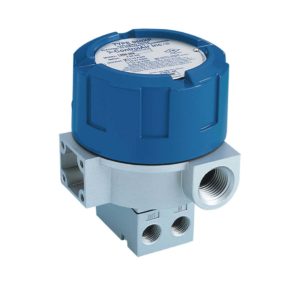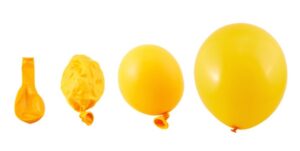Sign up for the ControlAir newsletter.
Get news, updates, and offers direct to your inbox.
Air pressure regulators, along with I/P transducers and volume boosters, are often used to regulate gasses other than compressed air. Some common gasses include nitrogen for tank blanketing, natural gas, and medical-grade oxygen. Air pressure regulators possess the physical ability to regulate a wide array of different types of gasses and could be used with virtually any gaseous matter given the right circumstances. This blog post will discuss what factors should be considered when regulating different gasses and how to decide what regulator is the right one for your application.
One factor to consider is the chemical compatibility between the gas that is being regulated and the wetted materials used in the device that is doing the regulating. Wetted materials include any material that will come in contact with the gas such as the elastomers, metals, and lubricants being used in the regulator. Inert gasses, such as Nitrogen (N2) and Argon (Ar), are gasses that generally do not react with other materials. Inert gasses are considered more friendly and can be used with almost any material. Reactive gasses, on the other hand, are more likely to react with other materials which could result in corrosion and premature failure of a regulator. Some more reactive gasses include compounds such as Ozone (O3) and Chlorine gas (Cl2). The components within a regulator can be made from a multitude of different materials. One common elastomer is Buna-N. One way to check on the chemical compatibility between Buna-N and a gas being regulated is to use an online chemical compatibility database. When using a database to check the compatibility of Ozone and Buna-N, we find that the two substances have poor compatibility which will lead to rapid degradation of the elastomer. The first step when considering a regulator for your application is to ensure that all materials are compatible with the gas that is going to be regulated.

The next factor to consider is how hazardous the gas being regulated is. When regulating explosive or toxic gasses, special considerations must be made to ensure the safety of everyone working in that area. Most regulators will consume some amount of air which will present itself as flow of air through the exhaust port of a unit. When regulating explosive or toxic gasses, this consumed air must be properly handled. This action can include using a regulator with a tapped exhaust and piping the gas to a safe exhaust location. Tapped exhaust units can also be used for more expensive gasses that an operator wants to recapture for further use. When regulating an explosive gas with an I/P transducer, using an explosion-proof unit that is intrinsically safe is required. This type of unit has a special cover and flame resistors that prevent any explosion that occurs within the housing from escaping the unit. It also prevents the ignition of any gasses, dust or fibers that are in the surrounding atmosphere of the unit. When you are going to be using hazardous gas or are operating in a hazardous environment, it is crucial that you use properly rated equipment.
The last factor to consider is the size of the molecule of the gas being regulated. As the molecule gets smaller, or has a smaller atomic number, it is more likely to escape through tiny spaces in a regulator. Hydrogen and Helium, for example, are the two smallest elements known to man. These gases are great at finding their way through very small spaces. Think about how a helium balloon will deflate after 24-48 hours. The helium gas is able to permeate through microscopic holes in the latex of the balloon. Helium has an even easier time escaping from a general use pressure regulator. That is why we recommend using a hydrogen or helium-specific regulator when working with these gasses. That way you will experience less loss of gas which in turn will save money in the long term.

All gasses are able to be regulated as long as you are using the proper regulator with the proper materials in the proper situation. Hopefully, this guide will serve as the primer to determining which regulator is the correct one for your application. When considering regulating additional gasses it is also important to consult with the manufacturer and refer to the operating manual to be sure that you are using the unit within the manufacturer’s specifications.